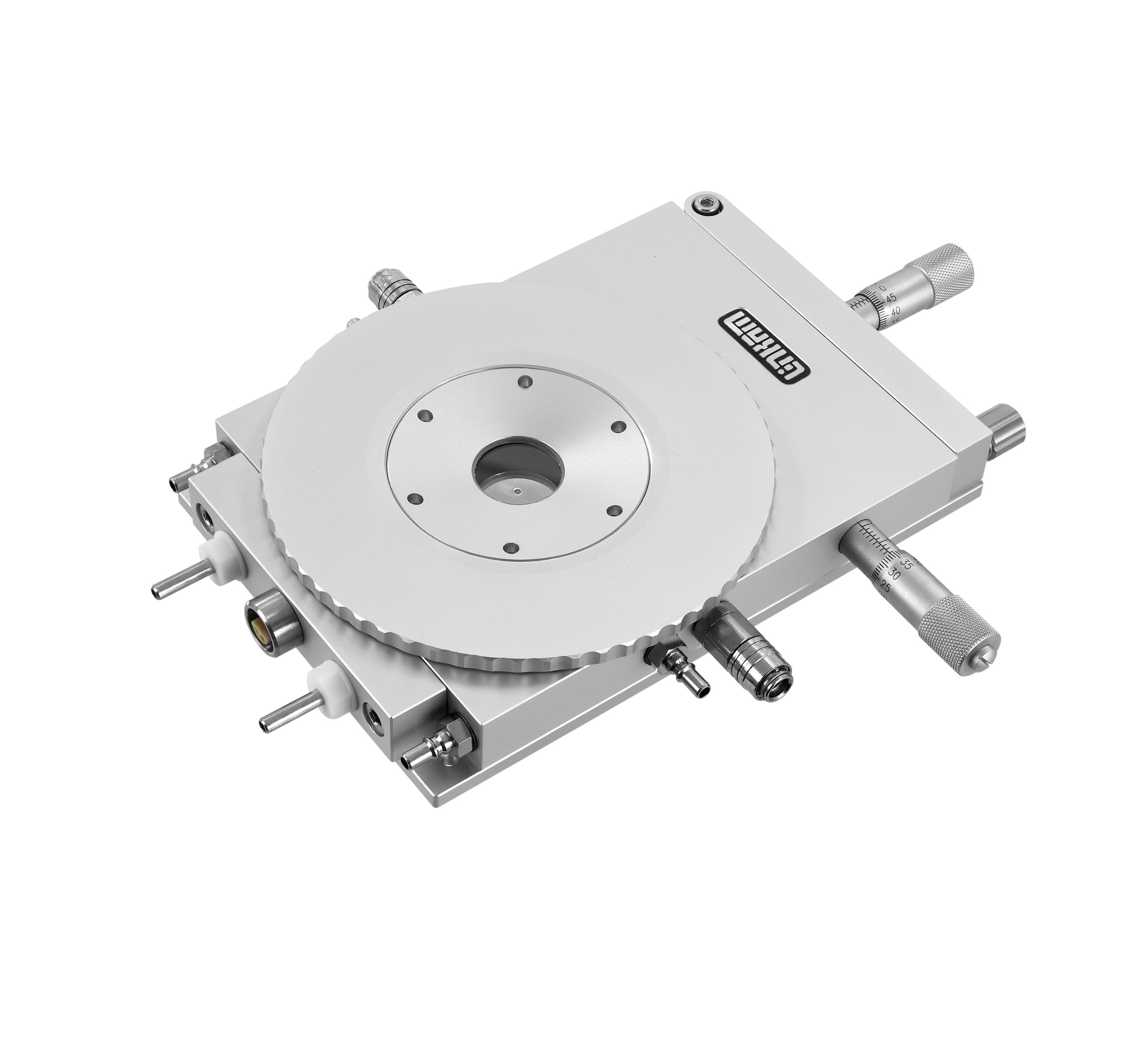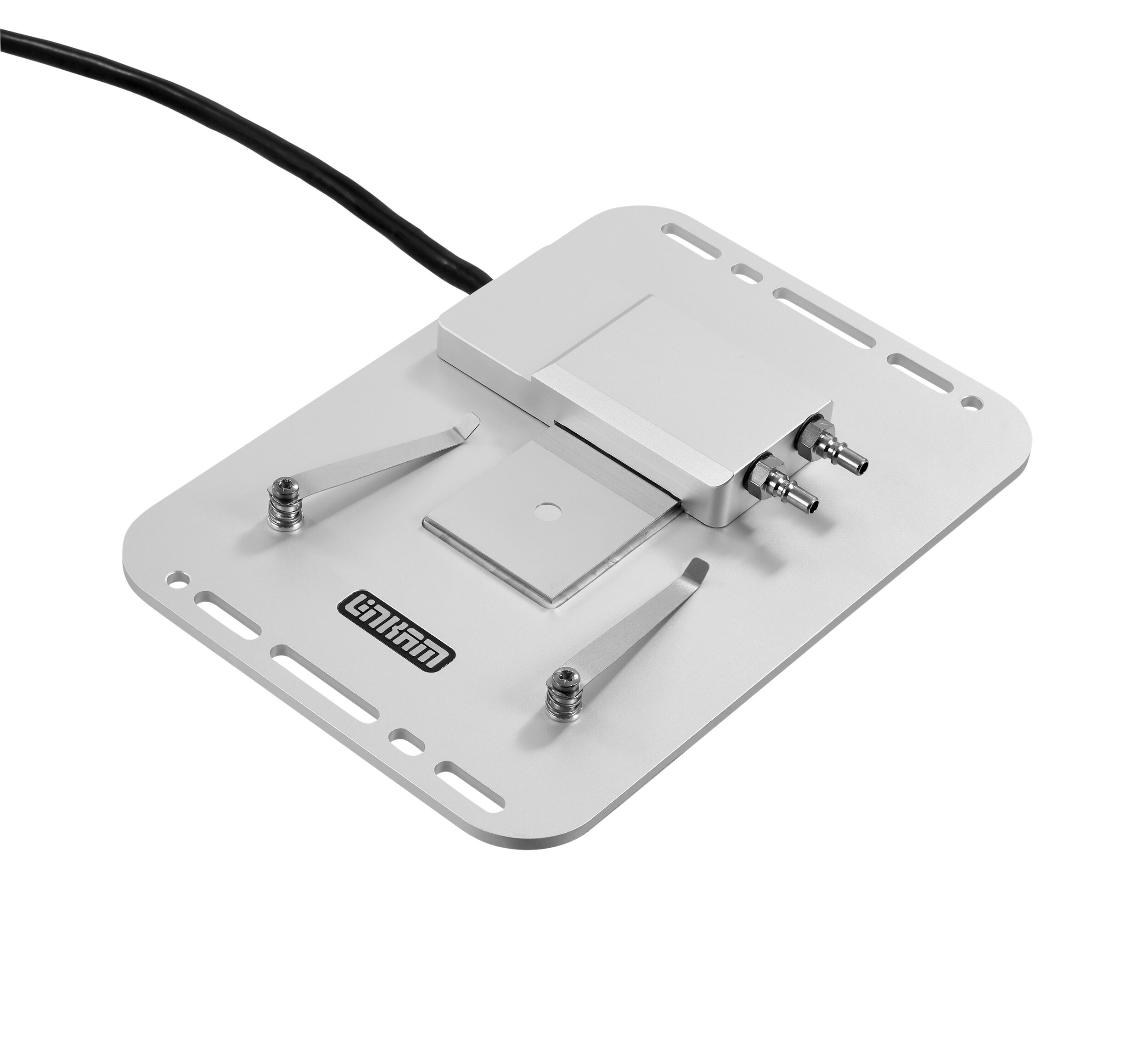Life Science Applications
Keeping cells and biological tissue in a controlled environment is key to understanding their behaviour in-vivo. Linkam has designed a range of sample characterisation chambers to control the temperature and environment around your samples. Linkam stages are used for a wide variety of applications from Cryopreservation to CLEM at < -195°C to the study of Archae at high temperatures and pressures. A humidity controller can be added to some closed chamber systems with control from 5% to 90% RH.
Linkam has developed a cryo-correlative (CLEM) stage, the CMS196M LED. Along with keeping samples vitrified, it provides proven capabilities to safely handle and transfer cryo samples, and enables high resolution mapping of EM grids with fluorescence microscopy while keeping them free of contamination at all times.
Linkam systems are compatible with light microscopy and spectroscopy techniques including Raman, FT-IR and X-ray.
Related Products
Published Papers

Application NOTES
Linkam’s FDCS196 is used by researchers at NIBSC and the University of Strathclyde to predict freeze-drying conditions for liposome-cryoprotectant mixtures (drug delivery systems), using light microscopy with a cryostage.
Developmental activities for freeze-dried products are dictated by the limited availability and high cost of newly developed active compounds, and by Quality-by-Design requirements. Laboratory-scale freeze dryers used for formulation and process development show an excessive variety of designs and instrumentation concepts, making scale-up activities a challenge. The development of miniaturised equipment may provide enormous benefits in terms of development times and costs.
The polar regions of the Antarctic and the Arctic are indicators of the changing global climate, and there is a lot of research underway to investigate how changing conditions will affect the polar ecosystems and beyond. The Korean Polar Research Institute (KOPRI) uses Raman spectroscopy in combination with Linkam stages to study ice crystals and chemical processes in polar ice in order to better understand climate change.
A team at the University of Alberta have been using the Linkam Freeze Drying system FDCS to study how intracellular ice formation during cryopreservation of cells is affected by the degree of supercooling and the cell volume, in the absence of cryoprotectants.
Researchers in Barcelona investigate the effect of additives on the effectiveness of cisplatin, a chemotherapy medication, using the CMS196 for cryo-fluorescence miscroscopy.
Linkam stages including the CMS196 in use in the Wolfson Bioimaging Facility at the University of Bristol as part of the endocytic sorting research of Dr Paul Verkade.
Researchers in Barcelona investigate the effect of additives on the effectiveness of cisplatin, a chemotherapy medication, using the CMS196 for cryo-fluorescence miscroscopy.
Researchers at the University of Warwick use the Linkam BCS196 to work at the interface of the organic and polymer chemistries with the life sciences, making use of modern polymer and organic methods to synthesise nano materials for various applications, including regenerative medicine, infectious disease and biotechnology.
White Oak Conservation Centre in Florida uses the BCS196 for IVF research, taking them closer to the goal of one day transporting genetic material collected from wild animals to be introduced into captive populations, enhancing genetic diversity.
Researchers at the University of Leeds are looking at how Protein crystallization is affected by changing the cooling rate.
























